Beste Leden,
Het Volkshuis is weer geopend. Woensdag 12 februari is er dus weer een VRZA bijeenkomst.
TOT DAN!
Beste Leden,
Het Volkshuis is weer geopend. Woensdag 12 februari is er dus weer een VRZA bijeenkomst.
TOT DAN!
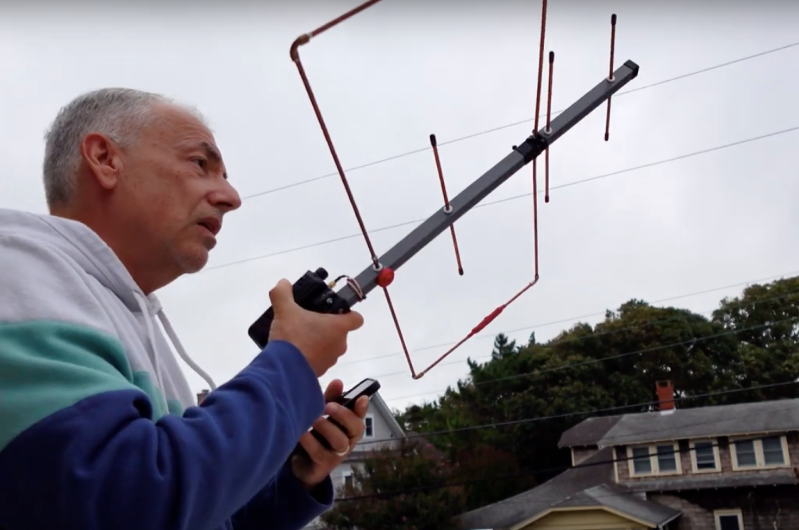
When the first artificial satellite, Sputnik, was put into orbit around Earth, anyone in the path of the satellite could receive the beeps transmitted by the satellite provided they had some simple radio equipment. Of course, there was no two-way communication with this satellite, and it only lasted a few weeks before its batteries died. Here in the future, though, there are many more satellites in orbit and a few are specifically meant for ham radio operators. And, like the ’50s, it doesn’t take too much specialized equipment to communicate with them, although now that communication can be two-way.
The first step in this guide by [W2PAK] is to know where these satellites are in the sky. The simplest way to do that is to use a smartphone app called GoSatWatch and, when configured for a specific location, shows the satellites currently overhead. After that it’s time to break out the radio gear, which can be surprisingly inexpensive. A dual-band handheld is required since satellite uplink and downlink can be on different bands, and the antenna can be made from simple parts as well as [W2PAK] demonstrates in a separate video. Combined, this can easily be done for less than $100. [W2PAK] also goes over the proper format and etiquette for a satellite contact as well, so a new operator can pick it up quickly.
Using satellites as repeaters opens up a lot of capabilities when compared to terrestrial communications. Especially for operators with entry-level licenses who are restricted to mostly VHF and UHF, it adds a challenge as well as significantly increased range compared to ground-based repeaters and line-of-sight communications. There are plenty of activities around satellites that don’t require a license at all, too, like this project which downloads weather imagery from weather satellites.
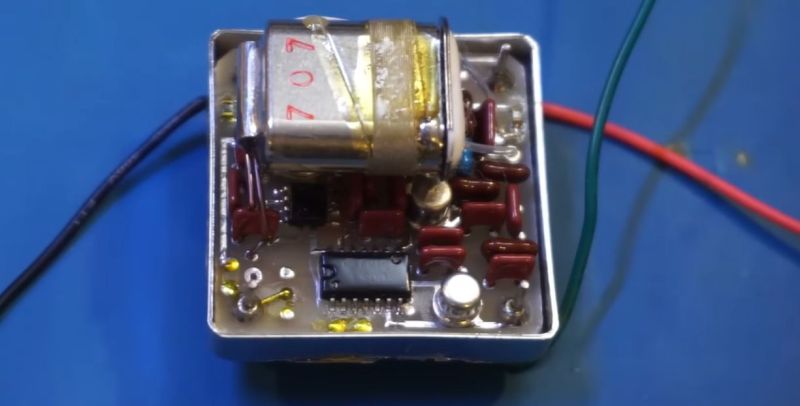
Crystal oscillators are incredibly useful components, but they come with one little snag: their oscillation is temperature-dependent. For many applications the relatively small deviation is not a problem, but especially for precision instruments this is a deal breaker. Enter the oven controlled crystal oscillator, or OCXO. These do basically what it says on the tin, but what’s inside them? [Kerry Wong] took apart a vintage Toyocom TCO-627VC 10 MHz OCXO, revealing a lot more complexity than one might assume.
Inside the insulated enclosure there is of course the crystal oscillator itself, which has a heating coil wrapped around it. Of note is that other OCXOs that [Kerry] took apart had more insulation, as well as other ways of providing the thermal energy. In this particular unit a thermistor is attached to the crystal’s metal case to measure its temperature and provide feedback to the heating circuit. The ICs on the PCB are hard to identify due to the conformal coating, but at least one appears to be a 74LS00, alongside a 78L05 voltage regulator which reduces the 12V input voltage.
As an older OCXO it probably is a lot chunkier than newer units, but the basic principle remains the same, with a heating loop that ensures that the crystal inside the unit remains at the same temperature.
Donderdag 30 januari 2025 vond de jaarvergadering van onze afdeling plaats. Daarbij waren twee bestuursleden van het VRZA bestuur aanwezig, namelijk Ron Goossen, PB0ANL en Freek Liefhebber, PD3FCA.
Het centrale thema van deze vergadering was het voortbestaan van onze afdeling. Er hadden zich geen kandidaten gemeld en het zag er aanvankelijk niet erg hoopvol uit.
Maar we zijn verheugd te melden, dat er toch een bestuur kon worden gevormd. De vergadering heeft zich unaniem achter het nieuwe bestuur geschaard.
De nieuwe bestuursleden zijn:
Voorzitter: Guido Reijntjens, PA4GR
Penningmeester: Mark Vroomen, PC9DB
Secretaris: Henk Schanssema, PA2S
Dinsdag 4 februari a.s. komen de nieuwe en afgetreden bestuurleden bijeen voor de overdracht.
Wij danken de aanwezige leden voor het vertrouwen. Ook zijn wij veel dank verschuldigd aan VRZA bestuursleden Ron en Freek, die de moeite namen om van “boven de rivieren” de reis naar Zuid-Limburg te maken. Hun aanwezigheid heeft zeker bijgedragen aan het bereikte resultaat!
Tevens danken wij het de afgetreden bestuursleden voor het vele werk, dat voor de afdeling is verricht.
Met vriendelijke groet,
Namens het bestuur van de VRZA afdeling Zuid-Limburg,
Thijs Has, PE1RLN
Henk Schanssema PA2S
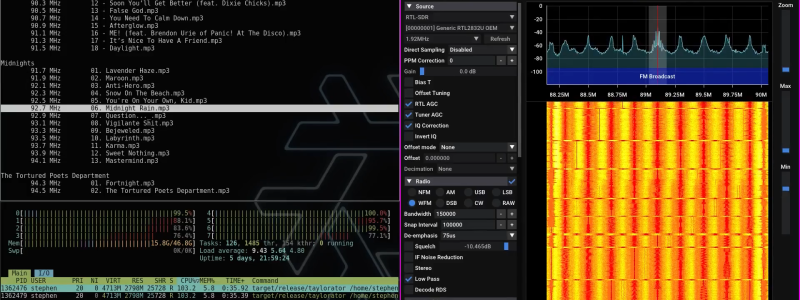
[Stephen] recently wrote in to share his experiments with using the LimeSDR mini to conduct a bit of piracy on the airwaves, and though we can’t immediately think of a legitimate application for spamming the full FM broadcast band simultaneously, we can’t help but be fascinated by the technique. Called the Taylorator, as it was originally intended to carpet bomb the dial with the collected works of Taylor Swift on every channel, the code makes for some interesting reading if you’re interested in the transmission-side of software defined radio (SDR).
The write-up talks about the logistics of FM modulation, and how quickly the computational demands stack up when you’re trying to push out 100 different audio streams at once. It takes a desktop-class CPU to pull it off in real-time, and eats up nearly 4 GB of RAM.
You could use this project to play a different episode of the Hackaday Podcast on every FM channel at once, but we wouldn’t recommend it. As [Stephen] touches on at the end of the post, this is almost certainly illegal no matter where you happen to live. That said, if you keep the power low enough so as not to broadcast anything beyond your home lab, it’s unlikely anyone will ever find out.
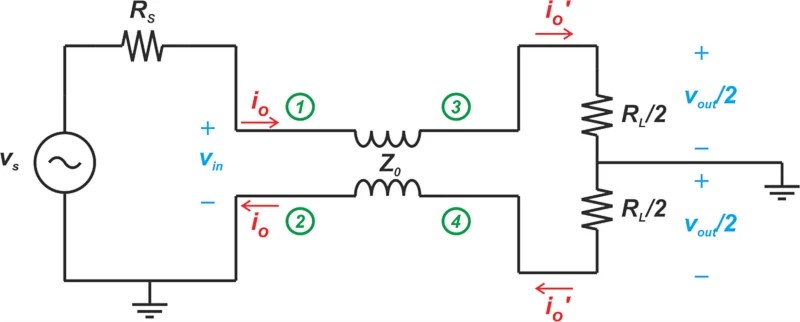

Even before entering the mystical realms of UHF design, radio frequency (RF) circuits come with a whole range of fun design aspects as well. A case in point can be found in transmission line transformers, which are commonly used in RF power amplifiers, with the Guanella transformer (balun) being one example. Allowing balanced and unbalanced (hence ‘balun’) systems to interface without issues, they’re both very simple and very complex. This type of transformer and its various uses is explained in a video by [FesZ Electronics], and also the subject of an article by [Dr. Steve Arar] as part of a larger series, the latter of which is recommended to start with you’re not familiar with RF circuitry.
Transmission line transformers are similar to regular transformers, except that the former relies on transmission line action to transfer energy rather than magnetic flux and provides no DC isolation. The Guanella balun transformer was originally described by Gustav Guanella in 1944. Beyond the 1:1 balun other configurations are also possible, which [Dr. Arar] describes in a follow-up article, and which are also covered in the [FesZ] video, alongside the explanation of another use of Guanella transformers: as an impedance transformer. This shows just how flexible transformers are once you can wrap your mind around the theory.
We have previously covered RF amplifier builds as well as some rather interesting balun hacks.
Heading image: The Guanella 1:1 balun. (Credit: Steve Arar)

The chances are that many of you will have made an FM “bug” style transmitter, a simple one-transistor oscillator usually driven by a small electret microphone. It’s also relatively straightforward to do the same for AM, and if you take a look through AliExpress you’ll find some modules which do just that. [Doz Television Workshop] has one, and he’s treated us to a thorough run-down of its design before addressing some of its shortcomings.
An AM transmitter is simple enough, in this case an oscillator and buffer driving a class C power amplifier. The modulation is applied by a transistor in series with the power amp, driven from an audio amplifier. Some attention has gone into the design of this one, with a proper output filter and plenty of room for tweaking to achieve proper levels and modulation density. There are some problems though — The modulator transistor is mounted upside down for the heatsink, and the frequency stability leaves something to be desired. [Doz] fixes the heatsink mounting and incorporates a DDS frequency synthesizer with an Arduino for control.
More after the break…
The resulting transmitter is better, but there’s still a problem. The limitations of AM broadcasting demanded both limiting and pre-emphasis, which he applies in software through one of the more powerful Teensy boards. We have to admit we’d have tried to do the job the analogue way, but that’s merely preference.
This board looks to be a good solution for an AM radio collector wishing to use their sets in an age of declining AM transmission. It should be legal under Part 15 for Americans, but as he points out it’s not for Brits. We suspect such a low-powered device wouldn’t attract adverse attention though. The video is below the break.
If you don’t need so much quality, it’s possible to do the job in a much less elegant manner.
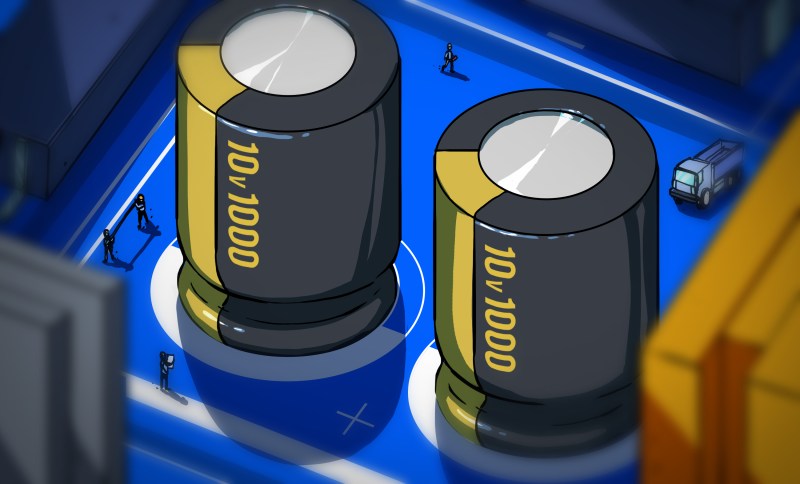
Everyone knows that the perfect capacitor to decouple the power rails around ICs is a 100 nF ceramic capacitor or equivalent, yet where does this ‘fact’ come from and is it even correct? These are the questions that [Graham] set out to answer once and for all. He starts with an in-depth exploration of the decoupling capacitor (and related) theory. [Graham] then dives into the way that power delivery is affected by the inherent resistance, capacitance, and inductance of traces. This is the problem that decoupling capacitors are supposed to solve.
Effectively, the decoupling capacitor provides a low-impedance path at high frequencies and a high-impedance path at low frequencies. Ideally, a larger value capacitor would be better, but since this is the real world and capacitors have ESL and ESR parameters, we get to look at impedance graphs. This is the part where we can see exactly what decoupling effect everyone’s favorite 100 nano-farad capacitors have, which as it turns out is pretty miserable.
Meanwhile, a 1 µF (ceramic) capacitor will have much better performance, as shown with impedance graphs for MLCC capacitors. As a rule of thumb, a single large decoupling capacitor is better, while two MLCC side-by-side can worsen noise. Naturally, one has to keep in mind that although ‘more capacity is better for decoupling’, there is still such a thing as ‘inrush current’ so don’t go too crazy with putting 1,000 µF decoupling capacitors everywhere.
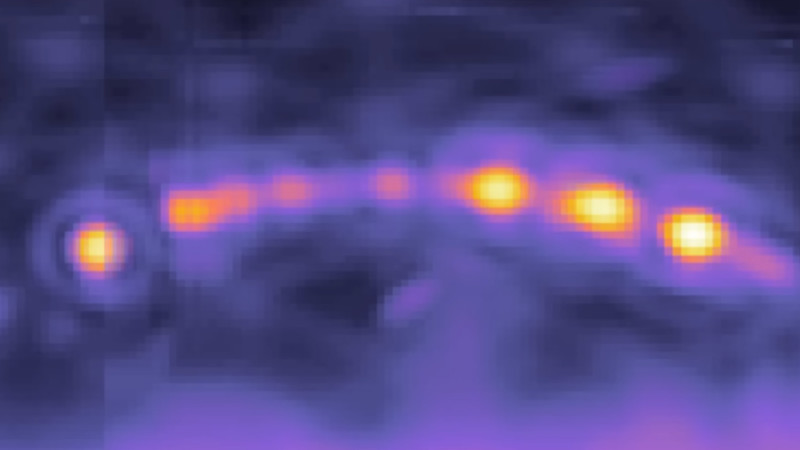
Not too far away from where this is being written is one of Uncle Sam’s NATO outposts, a satellite earth station for their comms system. Its most prominent feature is a radome, a huge golf-ball-like structure visible for miles, that protects a large parabolic antenna from the British weather. It makes sense not just for a superpower to protect its antennas from the elements, and [saveitforparts] is doing the same with a geodesic dome for his radio telescope experiments. But what effect does it have on the received signal? He’s made a video to investigate.
The US military radome is likely constructed of special RF-transparent materials, but this smaller version has a fibreglass skin and an aluminium frame. When he compares internal and external sky scans made with a small motorised satellite TV antenna he finds that the TV satellites are just as strong, but that the noise floor is higher and the frame is visible in the scan. It’s particularly obvious with such small dish, and his planned larger array should improve matters.
We would be curious to know whether an offset-fed dish constructed to minimise ground noise reaching the LNB, would improve matters further. It’s no surprise that the frame doesn’t impede the TV satellites though, as it is many wavelengths wide at that frequency. The video is below the break, and meanwhile, we featured the antenna he’s using here in 2023.
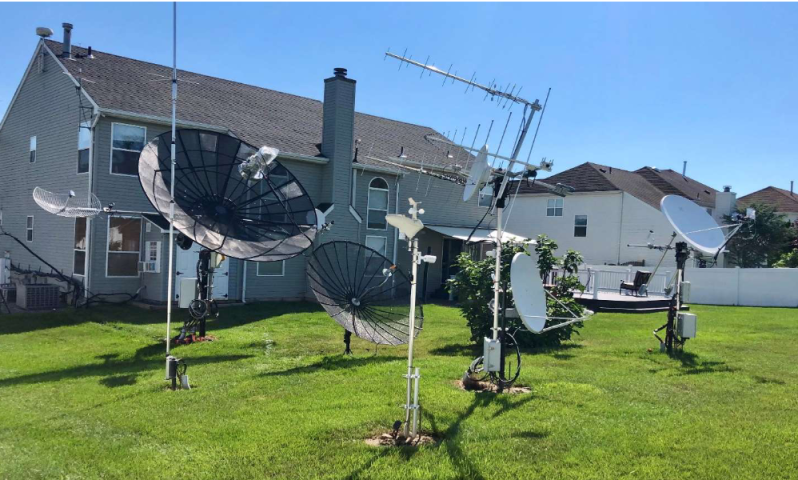
One of the more popular activities in the ham radio world is DXing, which is attempting to communicate with radio stations as far away as possible. There are some feats that will earn some major credibility in this arena, like two-way communication with Antarctica with only a few watts of power, long-path communication around the globe, or even bouncing a signal off the moon and back to a faraway point on Earth. But these modes all have one thing in common: they’re communicating with someone who’s also presumably on the same planet. Barring extraterrestrial contact, if you want to step up your DX game you’ll want to try to contact some of our deep-space probes (PDF warning).
[David Prutchi] aka [N2QG] has been doing this for a number of years now and has a wealth of knowledge and experience to share. He’s using both a 3.2 meter dish and a 1.2 meter dish for probing deep space, as well as some custom feed horns and other antennas to mount to them. Generally these signals are incredibly small since they travel a long way through deep space, so some amplification of the received signals is also needed. Not only that, but since planets and satellites are all moving with respect to each other, some sort of tracking system is needed to actively point the dish in the correct direction.
With all of that taken care of, it’s time to see what sort of signals are coming in. Compared to NASA’s 70-meter antennas used to communicate with deep space, some signals received on smaller dishes like these will only see the carrier wave. This was the case when an amateur radio group used an old radio telescope to detect one of the Voyager signals recently. But there are a few cases where [David] was able to actually receive data and demodulate it, so it’s not always carrier-only. If you’re sitting on an old satellite TV dish like these, we’d certainly recommend pointing it to the sky to see what’s out there. If not, you can always 3D print one.